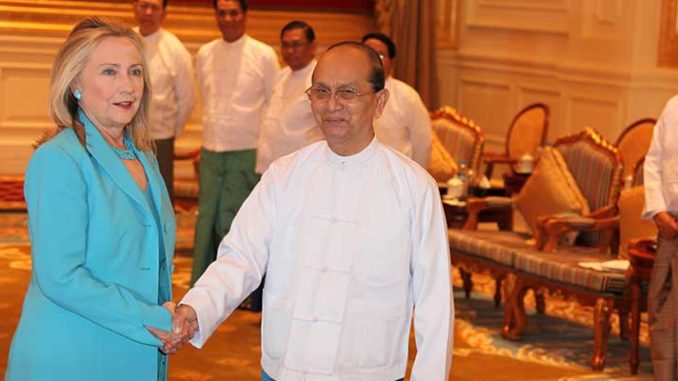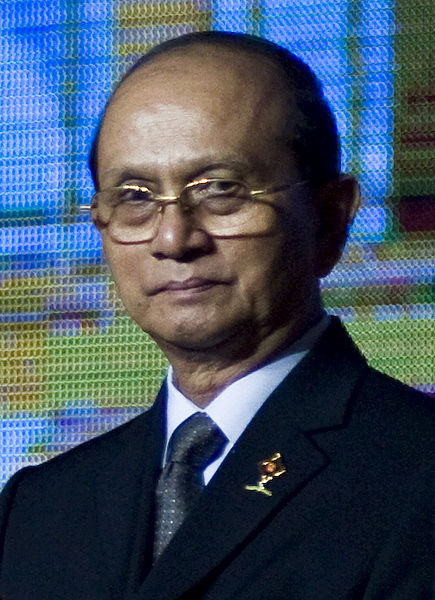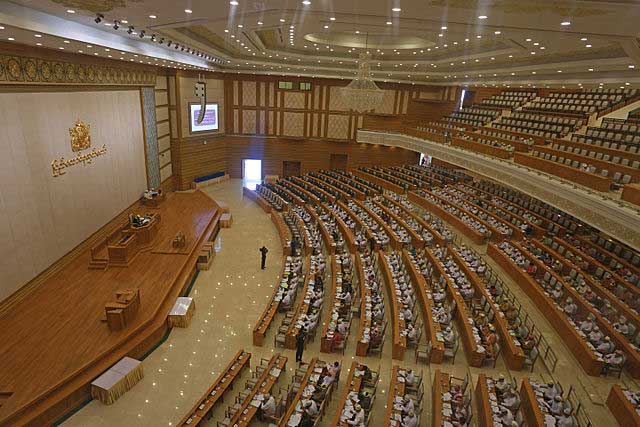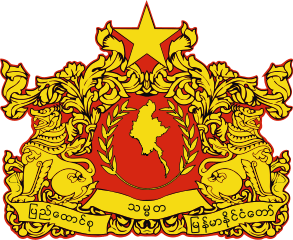
Strengths and Weaknesses of Thein Sein’s Leadership
The Unpredictability of Change
No-one could foresee the changes that are now taking place in Myanmar. March 2011 witnessed the end of 23 years of rule by military government. The former Prime Minister, Thein Sein, became President and in 2008, constitutional “civilian” rule began. In rapid succession, the new government brought about political and economic reforms. Reconciliation moved forward with pro-democracy forces and in 2012, western sanctions were mostly lifted. This is an amazing transformation and leads us to ask the following question: why was no-one able to predict it?
There are a number of reasons and I would like to give three that relate to domestic politics. Firstly, most observers were unable to imagine that General Than Shwe would remove himself so smoothly from politics. Since 1992, Than Shwe occupied the highest position in the military junta and was seen to be one of the few archetypal dictators of our time. The actual reality of his leadership is shrouded in mystery. What did this taciturn dictator want to do with Myanmar? It appeared that he did not have a clear political vision and was strongly attached to his power. In 2011, there were also rumors that directly after the transfer of power, Than Shwe was pulling political strings in the background to manipulate the new administration through the “State Supreme Council.” Yet, these rumors were unfounded and Than Shwe does not appear to have influence over any of Thein Sein’s decision-making.
The second is that contrary to all expectations, the new President Thein Sein is a reformer. He is 12 years younger than Than Shwe, and also a former general. During his time under Than Shwe, he was the first secretary of the State Peace and Development Council (SPDC) as well as a former prime minister who supported the previous regime. Though capable as an individual, it was hard to imagine that he would fundamentally change the policies of the military junta directly after becoming the new President. Also suffering from heart disease, most thought that Thein Sein would retire from public life during the transition to “civilian” rule. However, his unexpected presidency and subsequent reforms have astonished people all over the world. As far as it is known, he is a highly serious figure and seems to be cleaner than other former generals in terms of corruption. In fact, according to a news report in Time magazine, 1 to date, he has never dispensed favors to his home village through his authority as prime minister or president.
The final one is that no one predicted that the National League for Democracy (NLD) would pledge to cooperate to the degree it did with the new administration. On April 29 2010, six months before the first general elections in 20 years were held, the NLD gave their Shwegondaing Declaration to the military junta demanding that 1). All political prisoners including the leaders of the NLD are unconditionally released, 2). The provisions of the (2008) constitution which are not in accord with democratic principles be amended and that 3). All inclusive free and fair general elections be held under international supervision. At the time, most observers thought that these demands were reckless. The military junta ignored them and went ahead, and held elections. Yet, the subsequent positive approach of Thein Sein toward reconciliation and Aung San Suu Kyi’s compromises after their first meeting in August 2011, led to a thaw in years of political confrontations in a remarkable short period of time.

As is clear, the transformations taking place in Myanmar are due to consensus between both the leaderships of the government and the pro-democracy movement, the power of influence they wield, and strong leadership. However, this transformation should not be seen as a victory of civil society. As the 2007 “Saffron Revolution” 2 and the subsequent crackdown by military troops showed, the junta did not need to make any concessions. Through exports of natural gas, government finances remained relatively stable. And on this occasion, the transformation did not arise due to any conflict between the elites. Of course, there is no such thing as monolithic political elites, and there were cracks in the leadership class which appeared to put forward the image of a strong Myanmar. An example of this was the conflicts that existed between the field officers and those officers attached to the military intelligence. Yet, these conflicts did not act as a trigger for transition. One of the defining characteristics of the recent transition is a shift from an older to younger leadership. This brought about a regime change from above. Yet, observing the rapid ascendency of Thein Sein to President, it is not possible that the sudden revolution came about solely from his ideas. Even the reform-minded Shwe Mann, the Speaker of the Pyithu Hluttaw (Lower House), once seen as a prime candidate to become President, couldn’t be seen as the sudden product of the new political environment. In all likelihood, most of the present reformists are following Thein Sein’s lead and shared similar attitudes toward reforms. Thus, reform, as one of a number of political options, probably arose during the transition between the older and younger leaderships.
Rising Expectations
At present, there are high expectations of Myanmar. One of these is democratization and another is economic development. Yet, contrary to current expectations, the country was the target of Western criticism. In 1993, the former U.S. President, Bill Clinton, gave a speech to the United Nations assembly with a roadmap for foreign policy as democratic enlargement. Since then, American diplomacy was informed by its critical views on an undemocratic Myanmar, and the ruling junta, its target. During the second Bush administration, Myanmar was also infamously labelled an “outpost of tyranny” and sanctions were gradually strengthened. 3 Yet, in the 20 years since the coup- d’Etat, not once did the military junta collapse. With the aim of wanting to deny Myanmar opportunities of economic growth, the American and E.U. sanctions succeeded. However, they were not effective in bringing about democratization.

The U.S. realized the limits of the sanctions and in 2009, the Obama administration initiated a re-engagement policy with Myanmar. 4 In all likelihood, it is coincidental that the European and American policy u-turn occurred at the same time that the leadership in Myanmar changed. 5 The “timing” in itself is very important. Furthermore, seizing the opportunity, Myanmar was able to effect a lifting of most sanctions in the space of two years. That a small nation in Asia was able to effect such a shift in American and European foreign policy is in itself an amazing feat. This diplomatic success is, of course, due to Thein Sein’s strong desire for reforms. And, furthermore, Aung San Suu Kyi’s high international visibility has also greatly contributed to change. Myanmar possesses a small-scale economy and at present, it is not greatly incorporated into the world economy. Past American and European policy toward Myanmar was decisively related to Aung San Suu Kyi’s treatment, and strengthened on each occasion she was placed under house arrest. Fortunately, this unfair diplomacy is strongly swinging in the opposite direction. Aung San Suu Kyi’s appeal to lift imposed economic sanctions was effective and finally resulted in diplomatic success for Myanmar. In the by-elections of April 2012, after being elected and becoming a member of the assembly, Aung San Suu Kyi positively contributed to President Thein’s diplomacy and became a spokeswoman to proclaim the reforms of the new administration. Simultaneously, the presidency was able to strike deals with the U.S. which has recently turned the spotlight of its foreign policy onto the Asia-pacific region.
These diplomatic successes have brought about great expectations both domestically and internationally. However, it appears that these are, to a certain degree, inflated. For a country that has experienced a military junta since 1962, and possesses the lowest economic standards in Southeast Asia, it is difficult to say that Myanmar will easily obtain a stable democracy and achieve miraculous economic growth. Global expectations are growing toward the upcoming 2015 general elections and it is too soon to speculate on what will happen in two years time. However, what we can say is if we look at other democratic nations in Southeast Asia (Thailand, the Philippines, Indonesia and Cambodia), in terms of the process of democratization, many have had various difficulties. Excluding Cambodia, the other three nations were relatively more liberal than Myanmar and state stability was relatively high. We cannot expect that Myanmar, which appears to be made up of military barracks, can so easily democratize. Political development is not a linear process so we should not have such high hopes.

So is this Democratization?
Myanmar’s political and economic reforms are taking place through a very sensitive political balance and the present power structure is composed of three separate layers. The first is President Thein Sein’s strong leadership and ministers – made up of former army generals- who support him. This shows continuity with the past military junta. The next is the governing party, Union Solidarity and Development Party (USDP). This party is made up of many businessmen and former public officials along with other citizens. Its backbone is formed of people who fundamentally support the government. They stabilize the power of the President while also assuring a certain degree of political plurality. One fourth of members of parliament are under the command of the Armed Forces whose influence is maintained constitutionally. During the rule of the military junta, the USDP was a mass mobilization organization and in essence subject to the strong influence of both the President and the Armed Forces. Any constitutional amendments require consensus from other three quarters of MPs and the presence of military MPs is potent enough to prevent any from taking place. Finally, the last is the pro-democracy movement. All of the opposition forces possess less than 20% seats in parliament and do not wield enough power in law-making processes. Through their presence, the President can show to Europe and the U.S. that political inclusiveness resides within the political system. As such, a certain degree of stability will be assured until the next elections.

Notwithstanding, when we consider other elements, we can see that President Thein Sein’s leadership is sensitively balanced. In spite of the stability of the institutional structure that supports his leadership, the mechanism that supports the regime is fragile. The 2008 Constitution is modeled on Indonesia’s from the era of Suharto. Under the Suharto regime, the dictatorship was skillfully set up: there were strong legislative presidential powers; Golkar’s manipulative role in political processes; legislative seats for military personnel; and established advantages of the ruling party within the electoral system. Yet, this kind of structure is not in place in Myanmar. USDP is a hastily assembled collection of politicians, and it’s difficult to say that the allegiance of MPs supporting the party is high. Furthermore, in the present international climate, barefaced intervention in elections would bring about international condemnation. Yet, the development of information technology and the abolition of censorship brings transparency to Myanmar’s political processes and it would be virtually impossible for the government to conduct backstage electoral fraud. Furthermore, Aung San Suu Kyi’s inordinate level of popularity must be considered. As such, the NLD as an organization is still weak, but is pinning its hopes on her winning power in the elections. The acquisition of four seats fought over in the April 2011 by-elections held in the Capital Naypyitaw, confirmed this. This outcome completely shattered the assumption that civil servants and their families, who were the majority in the city, would support the present administration and vote for USDP.
Until the general elections of 2015, will Thein Sein and the USDP be able to overcome weakness? Will the NLD suddenly become the ruling party? Or will both of them engage in making political deals? The next three years of political trading will be an important period for us to predict Myanmar’s future democratization and its economic growth.
Yoshihiro Nakanishi
Center for Southeast Asian Studies, Kyoto University
Translated by Mario Lopez
Kyoto Review of Southeast Asia. Issue 14 (September 2013). Myanmar

Notes:
- ”Inside Man” Time (January 21, 2013) ↩
- This term is politically used, but the author believes that the use of ‘revolution’ is not adequate to describe those social movements which don’t meet their objectives. ↩
- See Michael F. Martin “U.S. Sanctions on Burma” CRS Report for Congress (January 11, 2011) ↩
- “Remarks With Indonesian Foreign Minister Noer Hassan Wirajuda, Jakarta, Indonesia (February 18, 2009) http://www.state.gov/secretary/rm/2009a/02/119424.htm ↩
- See Robert Taylor for an overview of the relationship between the U.S.’s policy change and Myanmar’s internal politics. Taylor, Robert. “Myanmar: From Army Rule to Constitutional Rule,” Asian Affairs Vol.43, No.2, pp.223-224 ↩

Touche. Sound arguments. Keep up the good work.